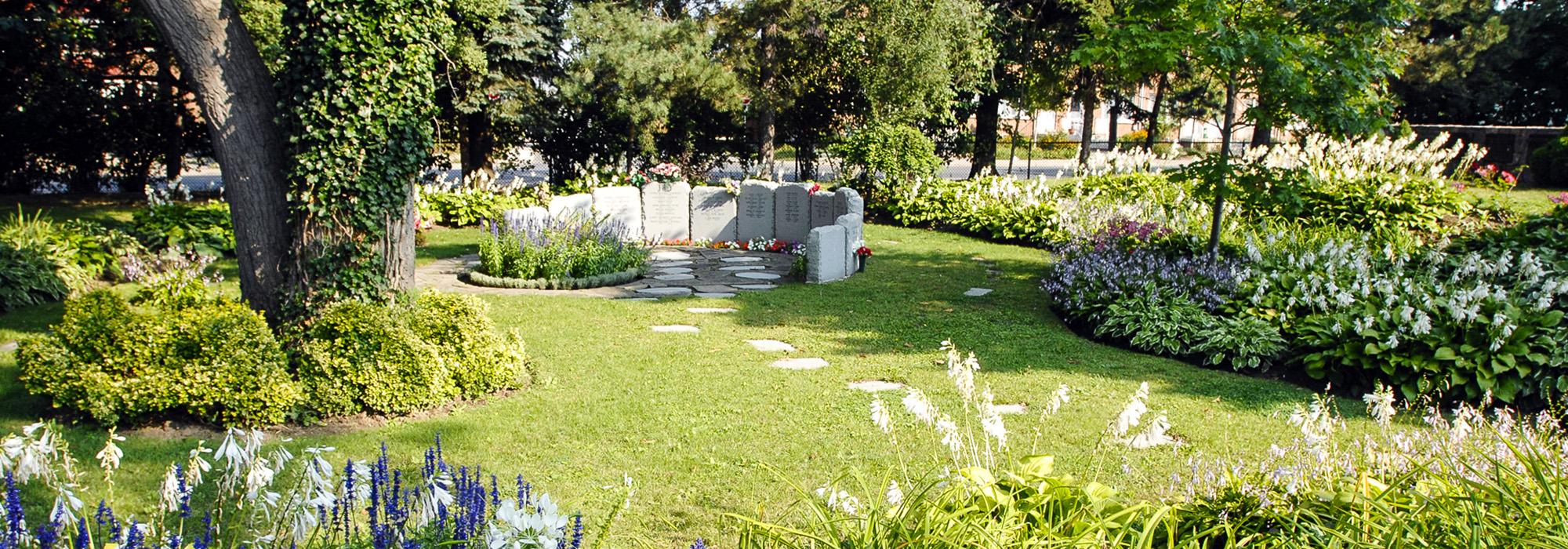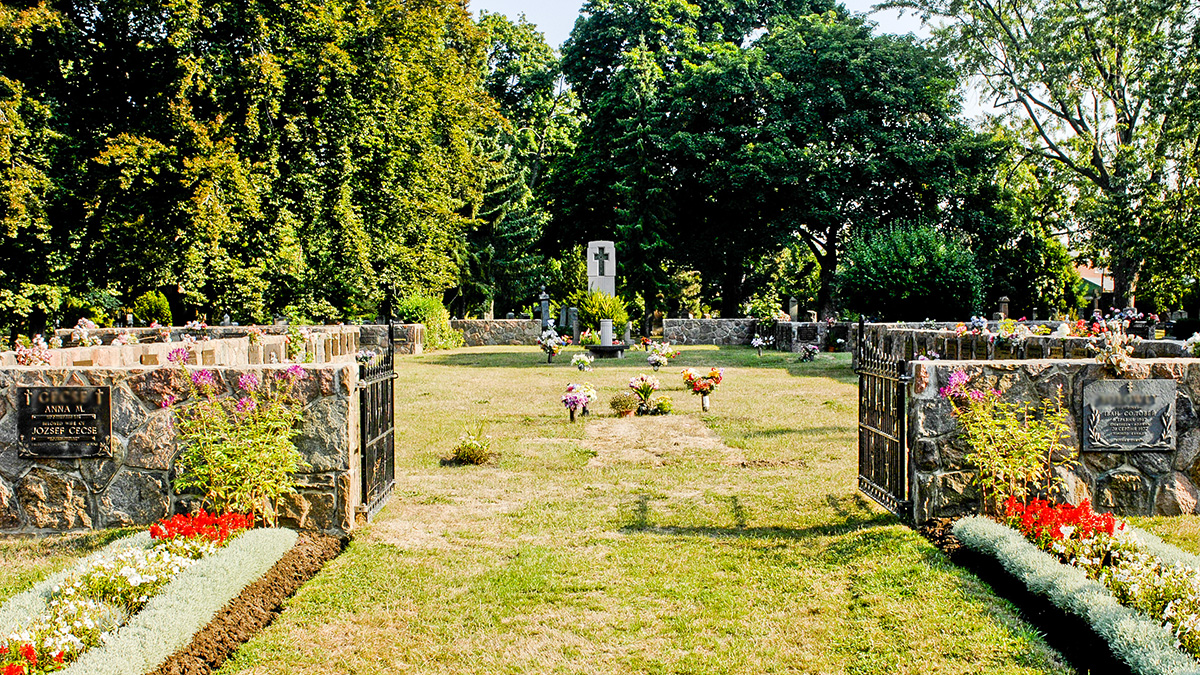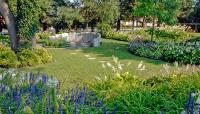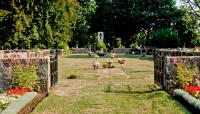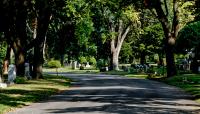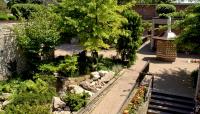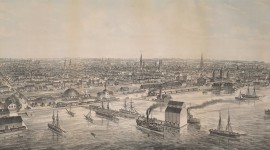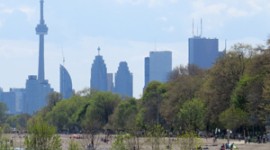Landscape Information
Seeking to create a non-sectarian cemetery for the growing communities west of the city, in 1887, the Trustees of the Toronto Burying Ground purchased 42 hectares of farmland. Two years later, landscape engineer Joseph Earnshaw was commissioned to design the cemetery on the narrow, undulating parcel, which was crossed by a ravine and a stream, and dotted with maples, white elms, and burr oaks. Embracing the site’s natural topography, Earnshaw cut a winding, looping road from the entrance on St. Clair Avenue through the full length of the parcel, with several other roads emanating from it throughout the sylvan setting. His plan included a lake near the middle of the parcel, and his division of the burial plots left the southernmost twenty acres free of monuments. The cemetery opened in 1890, with some 500 trees planted in the first year.
In the 1920s Rogers Road and Kitchener Avenue trisected the plot, each with gated, vehicular entrances to the cemetery. The area of the lake was subsequently in-filled, and in the 1990s, some of the original roads were altered to accommodate more burials, with new monuments added in older sections. Four mausolea were eventually built on the site: a small one lying on the eastern edge of the property’s middle section, and three others in the southern portion, two of which were designed in the Modernist style by Baird Sampson Neuert, Architects. The property is fenced on all sides with various materials—wrought-iron, chain-link, wood, and masonry—and a small, wooden gatehouse covers a pedestrian entrance on its northern edge.



